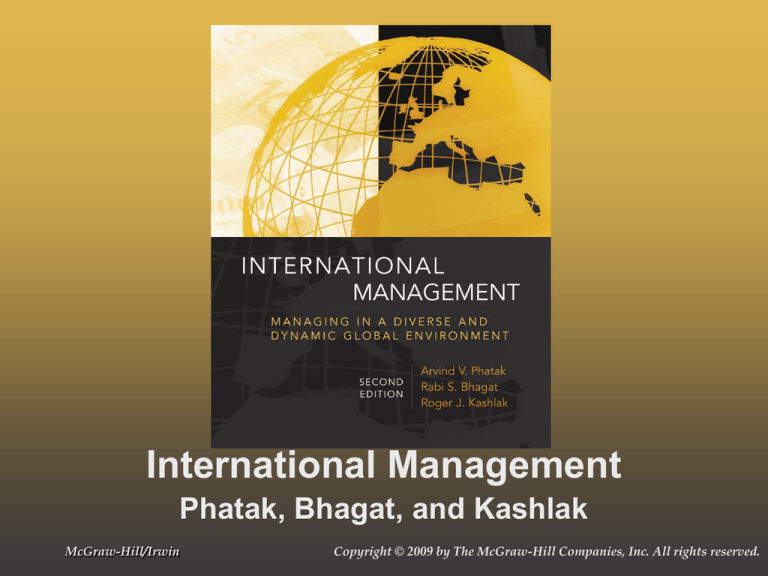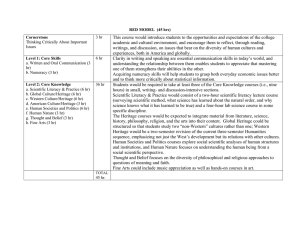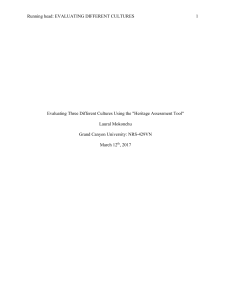
International Management
Phatak, Bhagat, and Kashlak
McGraw-Hill/Irwin
Copyright © 2009 by The McGraw-Hill Companies, Inc. All rights reserved.
Chapter 8
Managing Technology and
Knowledge
Learning Objectives
Understand the concept of technology and the process of
technology transfer.
Explain the relevance of appropriate technology transfer for
international management.
Define and distinguish among the concepts of data, information,
and knowledge.
Understand the relevance of these three commodities for
international management.
8-3
Learning Objectives (contd.)
Explain the process of creation, transformation, and transfer of
knowledge.
Identify the processes that integrate management of technology
and knowledge with strategic processes of international and
global corporations.
Understand the roles of strategic factors, administrative heritage,
and technical systems in the process of knowledge transfer.
Understand the concept of learning organizations.
8-4
Chapter Topics
Understanding Technology
Technology and Technology Transfer
The Role of Strategy and Cultural Issues
Knowledge in Organizations
The Process of Knowledge Management
Managing the Knowledge Life Cycle
Integration of Strategic Processes with Knowledge Management
The Learning Organization
8-5
Technology and Technology Transfer
Technology comprises a systemically developed set of
information, skills, and processes that are needed to
create, develop, and innovate products and services
Technology transfer is the movement of technology
from one person to another, one unit to another, or one
company to another
8-6
Types of Technologies
Product-embodied technology
Is transferred by transferring the physical product itself
Process-embodied technology
Is transferred by transferring blueprint or patent rights of the
actual scientific processes and engineering details
Person-embodied technology
Is transferred through continuous dialogue between the
supplier and the recipient organizations pertaining to the
intrinsic nature, diffusion, and utilization of scientific details
that are hard to articulate in the form of either process or
product
8-7
Factors Influencing Technology Transfer
Similar language
Common ancestry and shared history
Physical proximity
Technical competence of the workforce
Complexity of the technology at the time of transfer
Number of successful prior transfers
8-8
Factors Causing Difficulty in Technology
Transfer
Differences in strategic thinking
Characteristics of the technology involved
Differences in organizational and corporate cultures
Differences in societal cultures
8-9
Ex. 8.1: Rate of Innovation and New
Technology Creation
Japan
US
India
Rate of
innovation or
new technology
creation
UK
France
Brazil
Collectivistic
Countries
Individualistic
Countries
8-10
Ex. 8.2: A Conceptual Model for Understanding
Cultural Constraints on Technology Transfer
Antecedent
Characteristics of
Technology Involved
Product-embodied
Process-embodied
Person-embodied
Societal Culture-Based Differences in
Terms of
Uncertainty avoidance
Power distance
Individualism vs. collectivism
Masculinity vs. femininity
Abstractive vs. associative
Effectiveness of
Technology Transfer
Across Nations
Antecedent
Differences in
organizational cultures
between the transacting
organizations
Absorptive Capacity of the Recipient
Organization
Local vs. cosmopolitan orientation
Existence of an already sophisticated
technical core
Strategic management process
Presumed causal
influences
Presumed moderating
influences
8-11
Knowledge
“Fluid mix of experience, values, contextual
information, and expert insight that provides a
framework for evaluating and incorporating new
experiences and information”
8-12
Features of Knowledge
(summarized by Nonaka and Takeuchi)
First, knowledge, unlike information, is about beliefs and
commitment. Knowledge is a function of a particular
stance, perspective, or intention.
Second, knowledge, unlike information, is about action. It
is always knowledge ‘to some end.’
And third, knowledge, like information, is about meaning.
It is context-specific and relational.
8-13
Intellectual Capital
… of a global corporation is the sum
total of its stock of knowledge, which
is described in procedures and
manuals as well as systematically
embedded in the organization’s unique
culture and its individuals
8-14
Processes for Transforming Information to
Knowledge
Comparison
Consequences
Connections
Conversation
8-15
Two distinct types of knowledge
Tacit knowledge is knowledge that is highly
personal, difficult to communicate, and highly
specialized. It is hard to process and transfer
because it is a part of the historical and cultural
context in which the organization exists.
Explicit knowledge is knowledge that can
be written and transmitted. It is discrete or
digital, stored in repositories such as
libraries and databases.
8-16
Four Modes of Knowledge Creation
8-17
Ex. 8.5: The Knowledge Life Cycle
Creation
Mobilization Diffusion
Commoditization
PERCENTAGE OF
PEOPLE OR
ORGANIZATIONS
THAT HAVE ACCESS
TO THE KNOWLEDGE
IN QUESTION
TIME
8-18
Effective Management of Knowledge
Strategic Considerations
Strategic intent of management emphasizes knowledge creation
through innovation and tangible administrative support for
innovation
Technical Systems
Management stresses research and development systems, the
sophistication of management information systems, quality, and
competence of technical and administrative staff
Administrative Heritage
The firm has a historical emphasis on knowledge creation, the
values and practices of founders and senior managers (leadership
legacy and organizational culture), the nature of organizational
communication, and the quality of professional interactions
8-19
Ex. 8.6: Knowledge Management Effectiveness as
a Product of Strategic Considerations, Technical
Systems, and Administrative Heritage
Administrative
Heritage
Effectiveness of
HRM Knowledge
and Systems
Strategic
Technical
Considerations
Systems
8-20
Ex. 8.8: Techniques for Enhancing the Creation
and Use of Organizational Knowledge
Incorporate learning on an individual and team basis as an important
part of corporate culture
Encourage systematic collection and recording of knowledge in
blueprints and manuals
Evaluate the contribution of existing knowledge to the value chain
Appoint “knowledge brokers” to foster and disseminate knowledge in
various subsidiaries
Nominate senior managers who can act as “boundary spanners” to
sense and monitor the development of new knowledge from the
external environment
Encourage the formation of multi-functional project groups and
quality circles
Create networks of professionals who can share information within the
organization as well as with relevant parties outside
Develop appropriate organizational structures and information systems
8-21
Ex. 8.8 (Contd.)
Encourage professional competence and team development
Provide rewards for creating and sharing knowledge
Develop routines and rules for sharing knowledge continuously
Encourage experimentation with knowledge creation and accept
occasional failures as part of the process
Provide valued resources, including uninterrupted time, for learning
Encourage job rotation leading to a breadth and depth of knowledge
and experience
Provide opportunities for learning by doing
Follow examples of leading organizations in the global marketplace
Encourage learning as a primary objective during joint ventures and
strategic alliances
Make effective use of consultants
8-22
Key Terms and Concepts
Administrative heritage
Data
Explicit knowledge
Information
Knowledge
Knowledge life cycle
Learning organization
Strategic significance of knowledge
Tacit knowledge
Technical systems
Technology
Technology transfer
8-23










